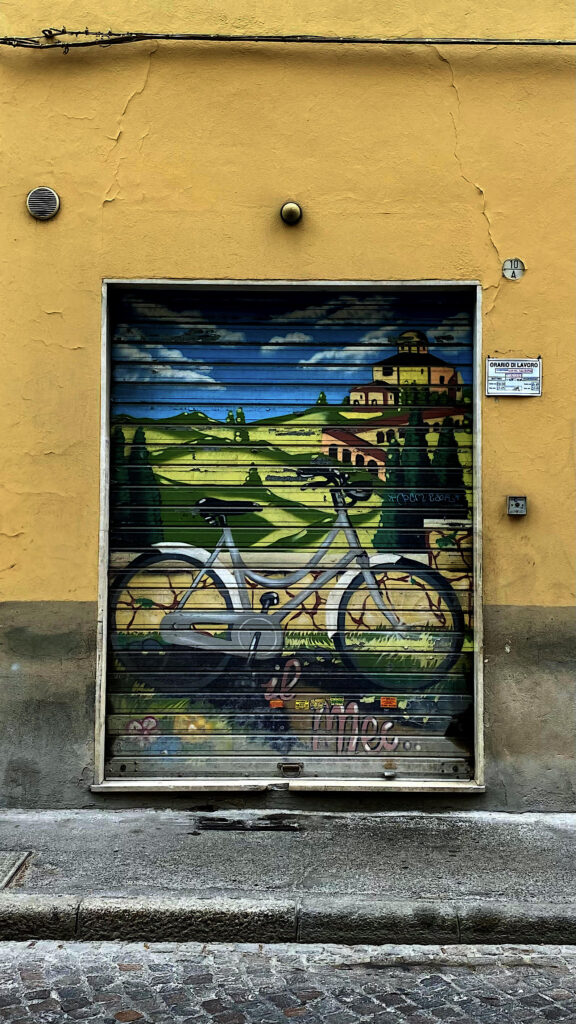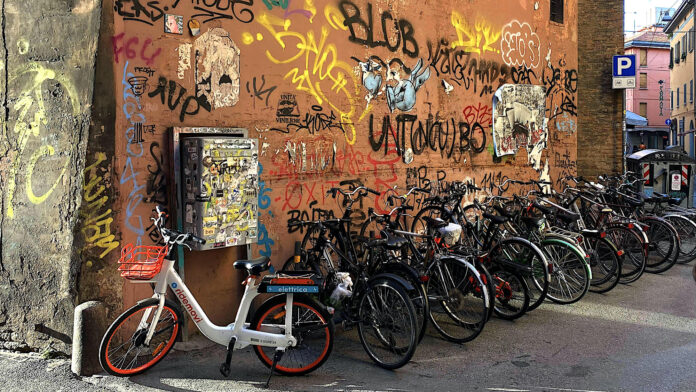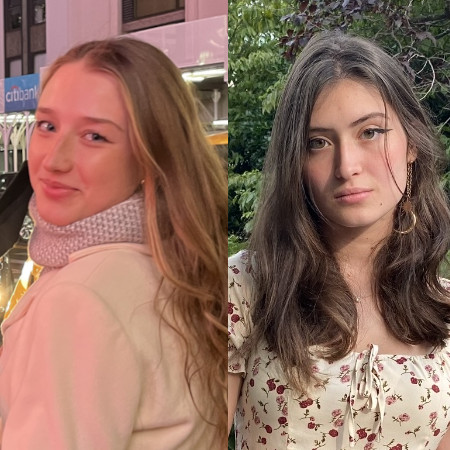Bologna is one of Italy’s most enthusiastic “bicycle cities” — but cycling advocates want more
By Caroline Poskrobko and Sophia Silva
Biking through Bologna, we’re mesmerized by the city’s lively atmosphere. The streets exude the allure of a yellow and orange sunset. The buildings are decorated with green-paneled windows that stand out against the warm colors of the walls.
We pedal into the heart of the city, beneath great columns, and past Medieval houses. Our tires echo on the cobblestones, as we skirt the drifting crowds.
An audience gathers near a fountain, to hear a local musician play. A flock of birds covers the sky over the central Piazza Maggiore. We see children running, holding their gelato cones.
We feel surrounded by life.
It’s easy to miss these important urban details while riding in a car.
Bike vibes
There’s a movement underway in Bologna to increase bike mobility. The many bike racks make the city look welcoming to cyclists. But they’re a facade for the pressing issues that plague the city’s biking community, biking advocates say.
A historic city like Bologna faces the challenge of scarce available public space, said city planner Simona Larghetti, who oversees bike mobility issues for the municipality. Many residents want more bike lanes — but there’s little room to add them to the already-narrow roads.
Larghetti is instead promoting the idea of bicycle-only streets.
“I’m sick of bike lanes, actually,” she said. “I think we have to create bicycle streets.”
In her vision, some of Bologna’s 2,000 kilometers of streets would be reserved only for bikes. Right now Bologna has 12 marked bike routes, covering about 150 kilometers.
“Maybe we just have to prioritize for bicycles and that’s it,” she said. “We already have the infrastructure; we just have to change the car-centric mentality to a people-centric mentality.”
One researcher concluded that cars take up half of the available space – known as “space occupation” — in Bologna’s historic center.
“We have a problem with space democracy in our city,” Larghetti said.
Bike Forum President Fabio Bettani elaborated.
“Today in the city center, we have about 6,000 parking spaces for bikes, and 9,000 parking spaces for cars. Of course it would be better for the city to at least change this ratio, because the more people you can bring to the city center, the more connected the city is, and the more it works like a community.”

Bike Rental Bologna owner Andrea Tramonti does favor the construction of more bike lanes, and stresses that other accommodations for cyclists must be made.
“If you create a business, you need to think about help, maps, information, water — everything one might need when biking,” he pointed out. “The same applies for bike lanes; you need to build them around services.”
Northern Europe countries, he pointed out, have places for cyclists to change their clothes, park and fix broken equipment.
“You can even stop for a bite on the bike path, the way you would do it on an Italian highway, at a gas station,” Tramonti said. “A highway for bikes, in a way. Unfortunately, here in Bologna we are still far from this idea.”
Larghetti aims to create a safe road plan that incorporates nicer conditions, road safety and a reduction of the driving speed limit to 30 km/hr, so both pedestrians and bikers can feel safe.
Bettani and Larghetti are both strong advocates of improving road safety. Recently Bettani’s club, the Consulta della Bicicletta, rallied to raise awareness about a June 2022 car accident in which a cyclist was killed.
“The car was going so fast that it completely lost control, and collided with three or four cars and then the person,” Bettani recounted. “We brought flowers, gave interviews and tried to give our point of view to the press that we should not allow this to happen. There are proven ways to avoid this.”
Biking has many plusses, Bettani pointed out. Though he started riding simply because it was a useful way to get around, he now recognizes riding’s environmental impact, in reducing pollution and use of fossil fuels, as well as the social and economic impact of supporting residents’ urban experiences.
“I started to get more and more involved, because I understood that [biking] is very efficient,” he said. “I think we don’t really choose things when they are right, but we choose them when they are efficient. There are few people who choose the right way and not the efficient one … I am still trying to convince people that it is efficient.”
How bikes connect residents to the city

Larghetti was Bettani’s predecessor, and they share more than a passion for refining bike policy. Both grew up in small villages, and felt ungrounded in city life.
“The bicycle was the tool that I used to feel comfortable in a city. So when I moved to a big city, I felt very lost,” Larghetti confessed. “My first time riding a bicycle in Milan, I felt like I was properly into the city. I was part of the city. I felt it was the right place to be.”
Bettani said he’d felt the same way.
“Cycling is what really made me feel a part of Bologna, because suddenly I could go pretty much wherever I wanted to go at the time I wanted,” he said.
Larghetti spoke of the social aspect of biking culture, and its leading role in uniting people.
“A topic that is not so frequently discussed is why bicycles are important in human relationships in the city,” Larghetti observed. “We created the city model in order to meet people, create relationships, and feel we belong to something.”
Other cyclists have discovered cycling’s connective properties.
Emanuele Caprara, a member of Bologna’s Cyclozenith club, said the group was established to promote the extension of the bike path network, to build a community and to plan trips abroad to explore and connect with different cultures.
Tramonti led us on a tour of Bologna’s biking network, where he helped us get a glimpse of the city’s once-great canal system, most of it buried during urban renewal projects in the 1950s and 1960s. Tramonti even introduced us to his friend, a retired university professor, who captivated us with his emotional retelling of Bologna’s history and features. Riding with our group, we were able to experience the feeling of belonging that Larghetti and Bettani remembered from their first urban rides.
Though we were foreigners here, our bicycles felt like a cover that helped us blend in. We never would have met so many new people, or learned so much about the city, had we toured by car, or on foot.
As long as no one heard us speak, we could have passed as Italians. That sense of belonging made it easier for us to observe and admire the city.



